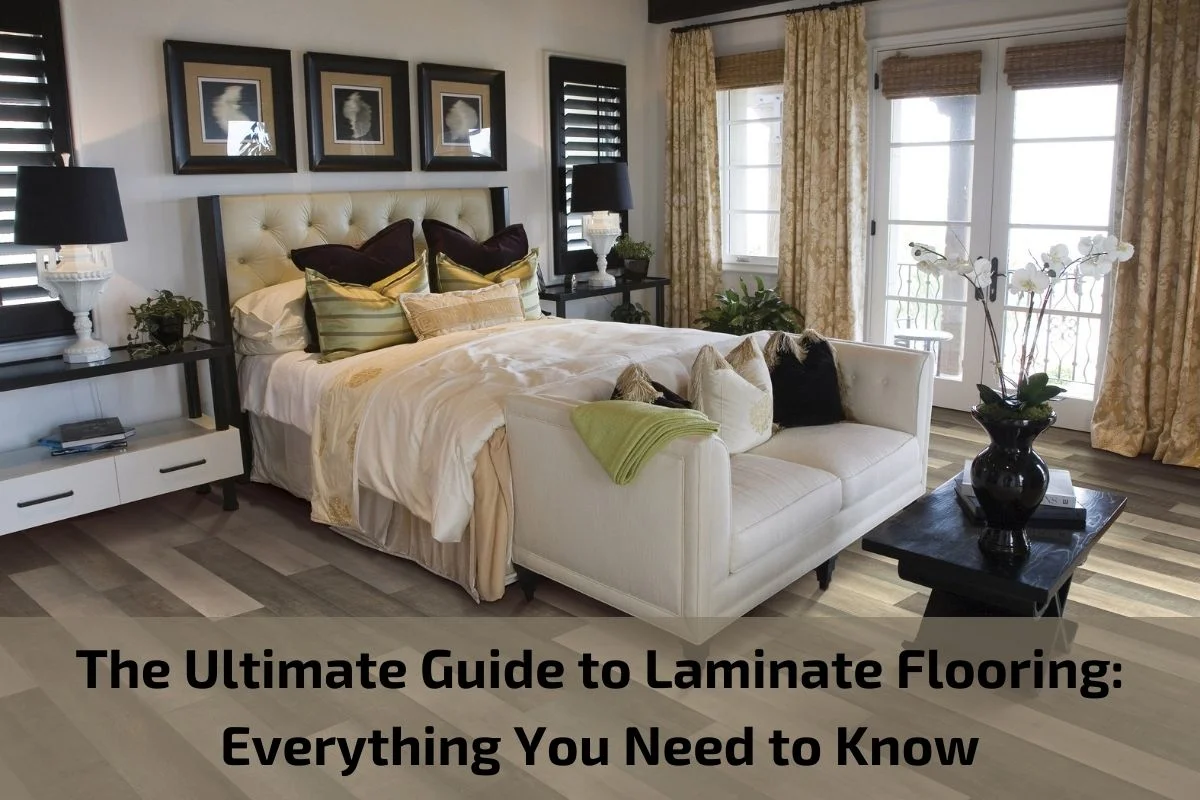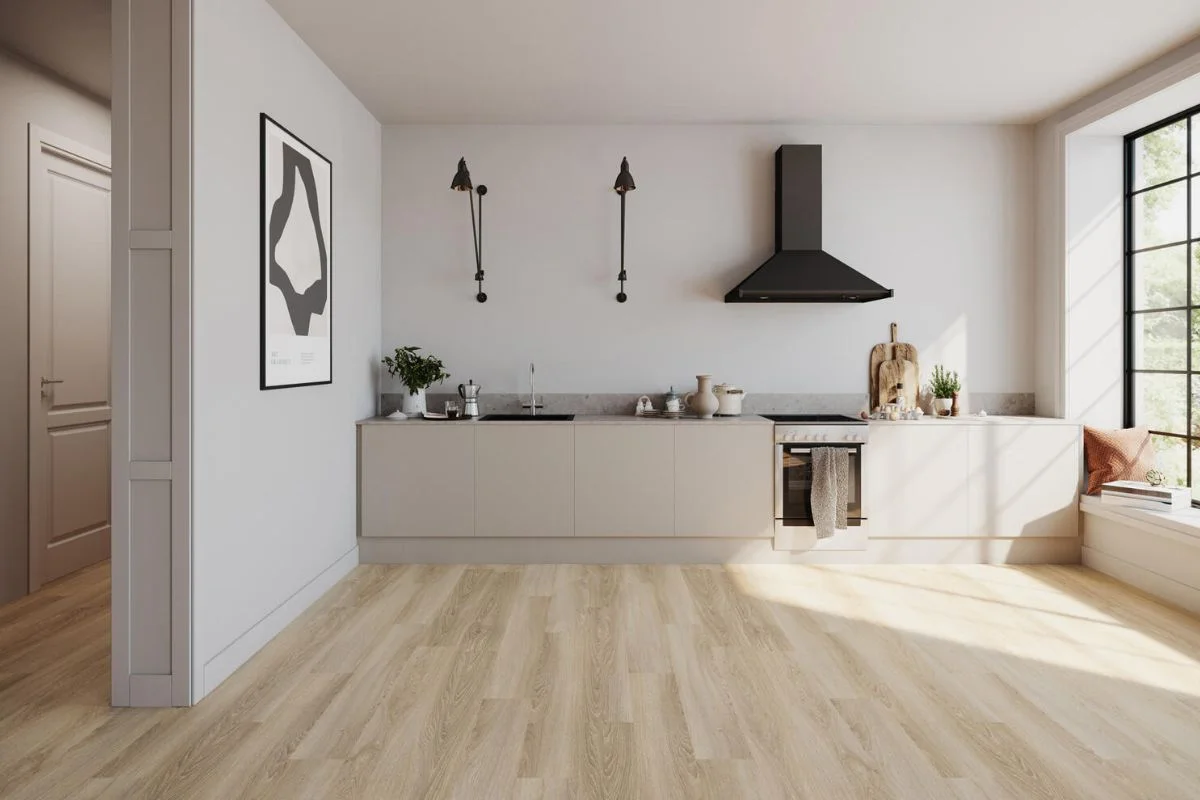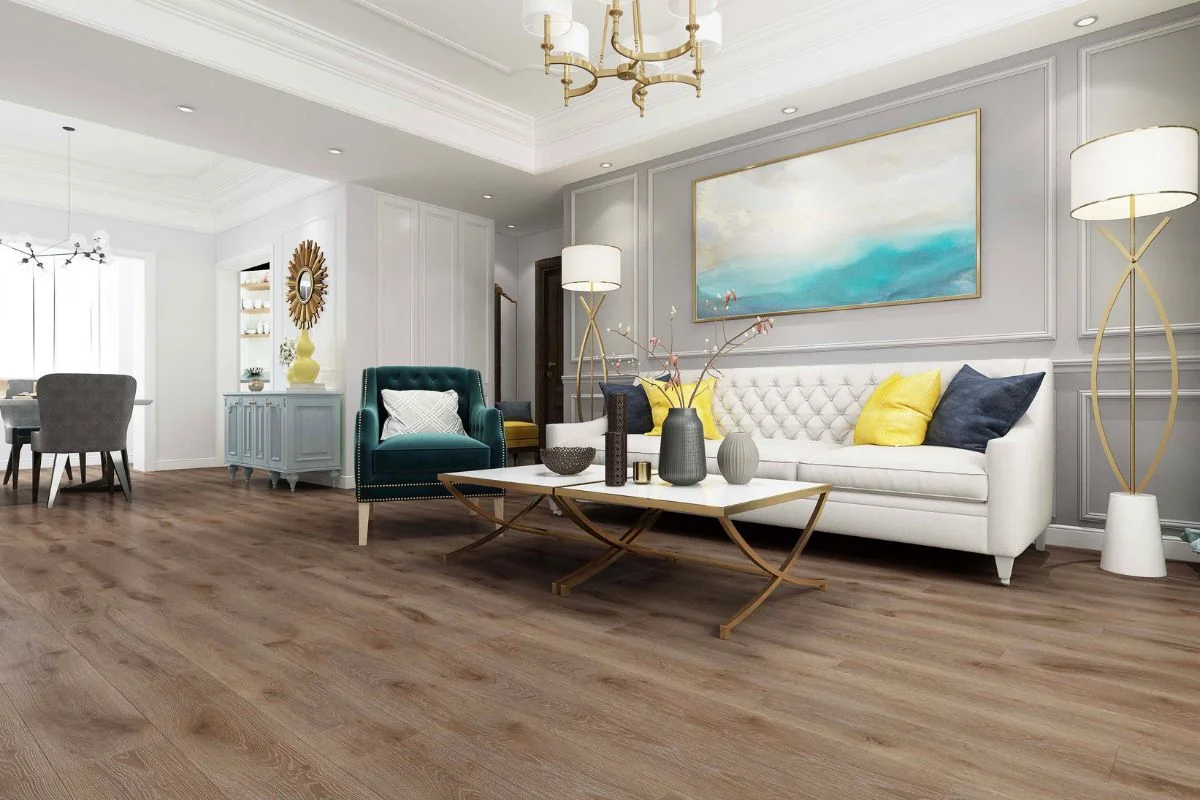Blog
 Laminate flooring has revolutionized the way we think about interior design and home renovation. With its versatility, durability, and aesthetic appeal, laminate flooring has become a popular choice for homeowners and designers alike. Whether you’re renovating your entire home or just updating a single room, laminate flooring offers a cost-effective and stylish solution that can transform any space.
In this ultimate guide to laminate flooring, we’ll delve into everything you need to know about this versatile flooring option. From understanding its composition and benefits to exploring the latest trends and installation techniques, we’ll cover all aspects of laminate flooring to help you make informed decisions for your home.
Join us as we embark on a journey through the world of laminate flooring, discovering its endless possibilities and uncovering the secrets to creating beautiful, functional spaces that reflect your unique style and personality. Whether you’re a seasoned DIY enthusiast or a first-time homeowner, this guide is your roadmap to achieving the floors of your dreams with laminate flooring.
Laminate flooring has revolutionized the way we think about interior design and home renovation. With its versatility, durability, and aesthetic appeal, laminate flooring has become a popular choice for homeowners and designers alike. Whether you’re renovating your entire home or just updating a single room, laminate flooring offers a cost-effective and stylish solution that can transform any space.
In this ultimate guide to laminate flooring, we’ll delve into everything you need to know about this versatile flooring option. From understanding its composition and benefits to exploring the latest trends and installation techniques, we’ll cover all aspects of laminate flooring to help you make informed decisions for your home.
Join us as we embark on a journey through the world of laminate flooring, discovering its endless possibilities and uncovering the secrets to creating beautiful, functional spaces that reflect your unique style and personality. Whether you’re a seasoned DIY enthusiast or a first-time homeowner, this guide is your roadmap to achieving the floors of your dreams with laminate flooring.
Brief overview of Laminate flooring
Laminate flooring is a popular type of synthetic flooring that replicates the look of natural materials such as hardwood, tile, or stone. It consists of several layers, including a wear layer, a design layer with a high-resolution image of the desired material, a core layer for stability, and a backing layer for moisture resistance.
One of the key benefits of laminate flooring is its durability and resistance to scratches, stains, and fading, making it an excellent choice for high-traffic areas in homes and commercial spaces. Additionally, laminate flooring is often more affordable than natural materials like hardwood or stone, making it a budget-friendly option for homeowners.
Another advantage of laminate flooring is its ease of installation, as many types come with a click-and-lock system that allows for straightforward DIY installation without the need for adhesives. This feature also makes laminate flooring relatively easy to remove and replace if needed.
Furthermore, laminate flooring is available in a wide range of styles, colors, and patterns, allowing homeowners to achieve the desired aesthetic for their space without sacrificing durability or performance. Whether you prefer the look of rustic hardwood, sleek tile, or elegant stone, there is a laminate flooring option to suit every taste and decor style.
Overall, laminate flooring offers a practical and cost-effective solution for achieving the look of natural materials without the associated maintenance or expense. Its combination of durability, affordability, and versatility has made it a popular choice for homeowners and designers alike.
Definition and composition Laminate Flooring
Laminate flooring is a type of synthetic flooring material designed to mimic the appearance of natural materials like hardwood, tile, or stone. It is composed of several layers that work together to provide durability, stability, and aesthetic appeal.
Wear Layer: The top layer of laminate flooring is known as the wear layer. It is a transparent, protective layer that resists scratches, stains, and fading caused by sunlight and foot traffic. The wear layer is essential for maintaining the appearance and longevity of the flooring.
Design Layer: Beneath the wear layer is the design layer, which features a high-resolution image of the desired material, such as wood grain, tile texture, or stone pattern. This layer is responsible for creating the realistic look of laminate flooring and is often produced using advanced printing technology.
Core Layer: The core layer is the foundation of laminate flooring and provides stability and strength to the planks. It is typically made of high-density fiberboard (HDF) or medium-density fiberboard (MDF) and may include additives for moisture resistance and impact protection.
Backing Layer: The bottom layer of laminate flooring is the backing layer, which provides additional support and moisture resistance. It is usually made of melamine resin or paper and helps prevent the flooring from warping or swelling due to exposure to moisture
Choosing the Right Laminate Flooring
Choosing the right laminate flooring for your home involves considering various factors to ensure that you select the option that best suits your needs, preferences, and budget. Here’s a guide to help you navigate the decision-making process:
Assess Your Needs and Preferences:
- Consider the traffic levels in the area where the laminate flooring will be installed. High-traffic areas may require a more durable laminate with a thicker wear layer.
- Determine your preferred style and aesthetic. Laminate flooring comes in a variety of designs, colors, and textures, so choose one that complements your existing decor or desired interior theme.
- Thickness and Durability: Thicker laminate flooring tends to be more durable and resistant to wear and tear. Look for options with a thicker core and wear layer, especially for areas prone to heavy foot traffic.
- Texture and Finish Options: Laminate flooring is available in a range of textures and finishes, including smooth, embossed, and hand-scraped surfaces. Consider the level of texture you prefer and how it complements your overall design scheme.
- Color and Design Considerations: Choose a color and design that aligns with your aesthetic preferences and complements your home’s interior decor. Consider factors such as lighting, furniture, and wall color when selecting the right shade and pattern.
- Budget Considerations: Determine your budget for laminate flooring, including installation costs. While laminate flooring is generally more affordable than hardwood or tile, prices can vary based on factors such as thickness, quality, and brand.
- Bring samples of laminate flooring home to see how they look in different lighting conditions and against existing furniture and décor.
- Consider the overall style and theme of your home when selecting laminate flooring. For example, contemporary spaces may benefit from sleek, minimalist designs, while traditional homes may pair well with rich wood tones and classic patterns.
- Take into account the visual flow between rooms when choosing laminate flooring. Opt for cohesive flooring options that create a seamless transition from one space to another
Benefits of Laminate Flooring
Laminate flooring offers numerous benefits that make it a popular choice for homeowners and commercial spaces alike. Here are some of the key advantages of laminate flooring:
Durability: Laminate flooring is highly durable and resistant to scratches, dents, and stains. Its wear layer provides protection against everyday wear and tear, making it an ideal choice for high-traffic areas in homes and commercial spaces.
Affordability: Compared to natural materials like hardwood or stone, laminate flooring is more budget-friendly. It offers the look of expensive materials at a fraction of the cost, making it a cost-effective option for homeowners on a budget.
Variety of Designs and Styles: Laminate flooring comes in a wide range of designs, styles, colors, and textures, allowing homeowners to achieve the desired aesthetic for their space. Whether you prefer the look of hardwood, tile, or stone, there is a laminate flooring option to suit every taste and decor style.
Easy Maintenance: Laminate flooring is easy to clean and maintain, requiring only regular sweeping and occasional mopping with a damp cloth. Unlike hardwood or carpet, laminate flooring does not require special cleaning products or treatments, saving time and effort on maintenance.
Installation Versatility: Laminate flooring is available in a variety of installation methods, including glue less click-and-lock systems that allow for easy DIY installation. It can be installed over most existing floors, including concrete, wood, and vinyl, making it a versatile option for renovation projects.
Resistance to Fading: Laminate flooring is resistant to fading caused by sunlight exposure, ensuring that it maintains its vibrant color and appearance over time. This makes it an ideal choice for rooms with large windows or exposure to direct sunlight.
Hypoallergenic Properties: Unlike carpet, which can harbor allergens like dust mites and pet dander, laminate flooring is hypoallergenic and easy to clean, making it a healthier option for allergy sufferers.
Eco-Friendly Options: Many laminate flooring manufacturers offer eco-friendly options made from sustainable materials and low-VOC (volatile organic compound) emissions, making them environmentally friendly choices for eco-conscious homeowner.
Maintenance and Care Tips Laminate Flooring
Proper maintenance and care are essential for preserving the beauty and longevity of laminate flooring. Here are some tips to help you keep your laminate floors looking their best:
Regular Cleaning:
- Sweep or vacuum laminate flooring regularly to remove dust, dirt, and debris. Use a soft-bristle broom or a vacuum cleaner with a soft brush attachment to prevent scratching.
- For deeper cleaning, use a damp mop with a mild cleaner specifically formulated for laminate flooring. Avoid using excessive water, as standing water can seep into the seams and cause damage.
- Wipe up spills immediately to prevent moisture from seeping into the flooring and causing warping or swelling.
- Avoid using abrasive cleaners, scouring pads, or steel wool on laminate flooring, as they can scratch or damage the surface.
- Steer clear of ammonia-based cleaners, bleach, or abrasive chemicals, as they can cause discoloration or damage to the protective wear layer.
- Place felt pads or furniture coasters under heavy furniture legs and appliances to prevent scratches and indentations on the laminate flooring.
- Lift furniture and avoid dragging or sliding heavy objects across the floor to prevent damage to the surface.
- Use mats or rugs in high-traffic areas and entryways to trap dirt, moisture, and debris before they reach the laminate flooring.
- Wipe up spills promptly and avoid excessive exposure to moisture, as laminate flooring is not waterproof and can be damaged by standing water.
- Use protective mats or trays under planters, pet bowls, and other items that may leak or spill water onto the floor.
- Use blinds, curtains, or UV-blocking window treatments to minimize exposure to direct sunlight, which can cause fading and discoloration of laminate flooring over time.
- Rearrange furniture and rugs periodically to ensure even exposure to sunlight and prevent uneven fading.
- For minor scratches or chips, use a laminate flooring repair kit to fill in the damaged area and restore the surface.
- Follow the manufacturer’s instructions carefully when using repair kits and avoid overfilling or applying excessive pressure
conclusion
In conclusion, laminate flooring offers a multitude of benefits that make it a popular choice for homeowners and commercial spaces alike. With its durability, affordability, and versatility, laminate flooring provides a practical and stylish solution for enhancing the beauty and functionality of any space




